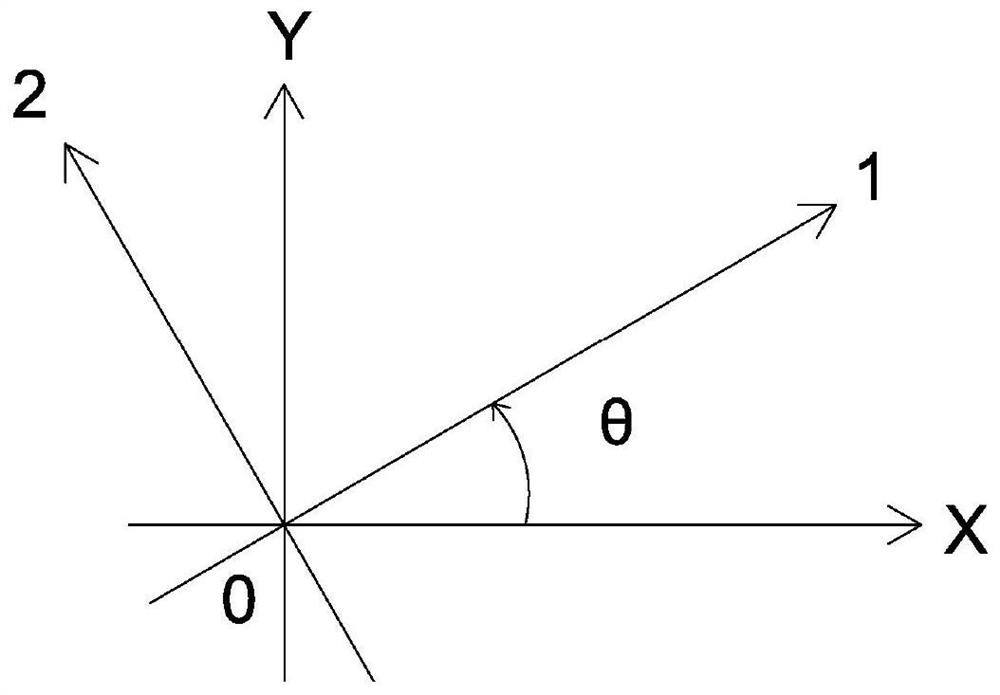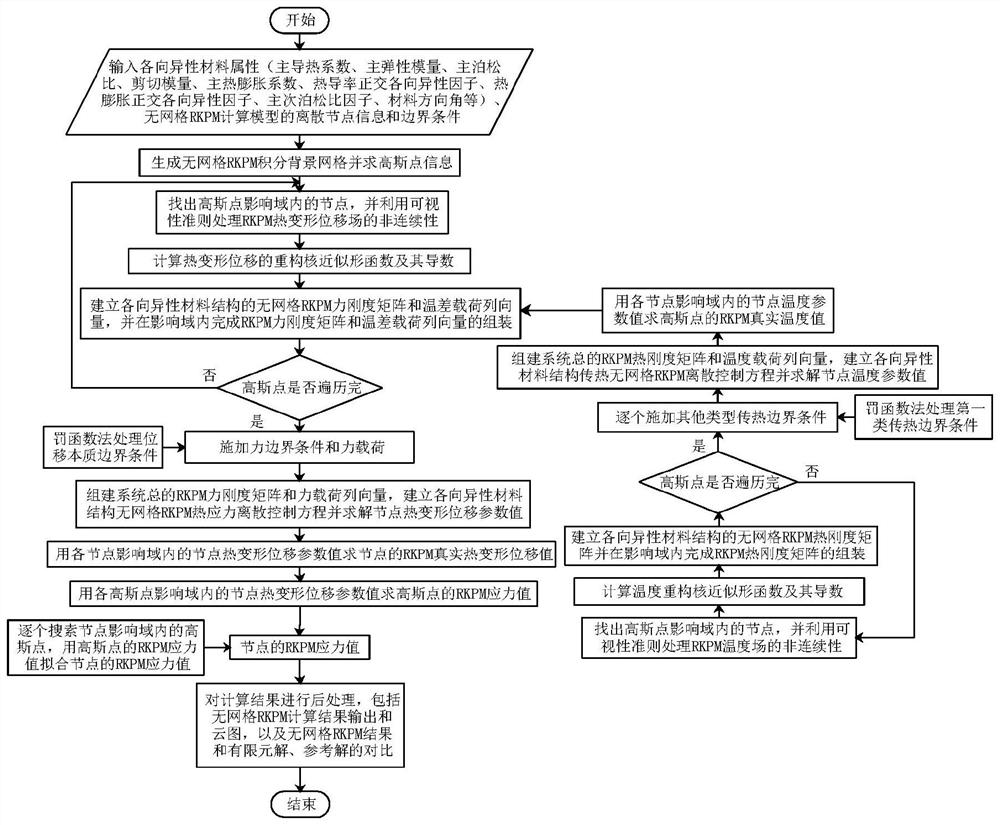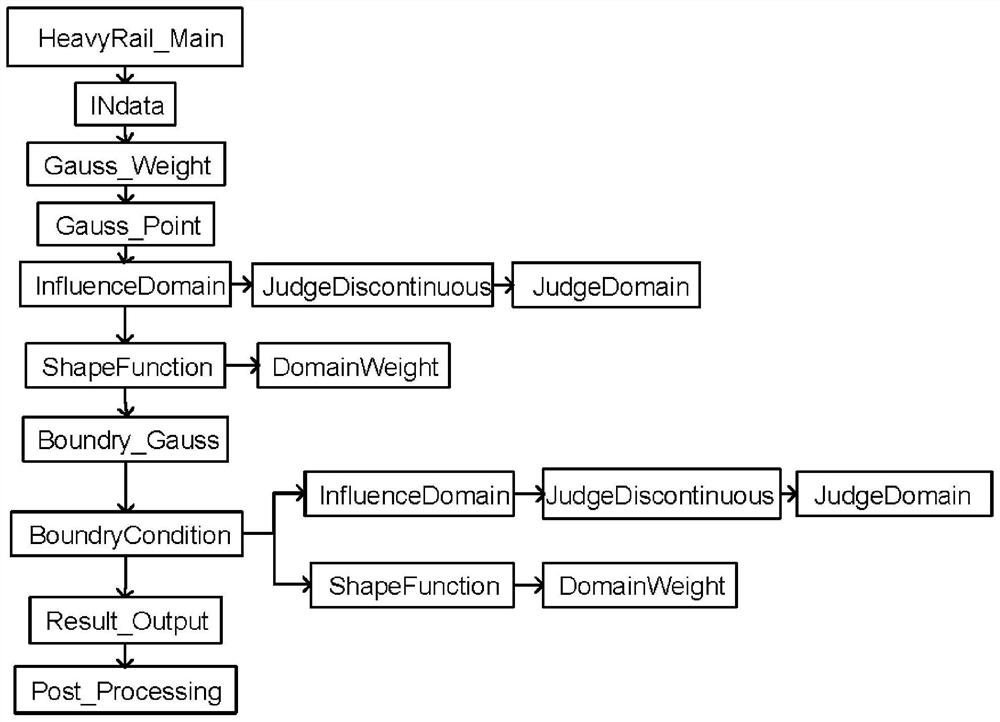Two-dimensional thermal deformation and thermal stress analysis method for anisotropic materials based on meshless rkpm
An anisotropic and orthotropic technology, applied in the field of numerical heat transfer, can solve the problem of thermal deformation and thermal stress without further research on complex structures of two-dimensional anisotropic materials, without consideration of thermal deformation and thermal stress , No research on thermal deformation and thermal stress issues, etc., to achieve good theoretical research and engineering application value, avoid grid distortion, and achieve good numerical stability
- Summary
- Abstract
- Description
- Claims
- Application Information
AI Technical Summary
Problems solved by technology
Method used
Image
Examples
Embodiment Construction
[0061] see figure 1 and figure 2 , the analysis method of two-dimensional thermal deformation and thermal stress of anisotropic material structure based on meshless RKPM mainly includes the following steps:
[0062] First, the conversion relationship between the thermal conductivity, stress component and strain component between the geometric coordinate system X—Y and the material coordinate system 1—2 is established, and the heat flux along the geometric coordinate axis direction is:
[0063]
[0064]
[0065] In the above formula, λ ij (i,j=1,2) is the thermal conductivity coefficient that varies with geometric coordinates, is the transformation matrix, λ 1 and lambda 2 is the thermal conductivity in the 1 and 2 directions of the principal axes of the material coordinate system. Define the material's thermal conductivity orthotropic factor Ht = λ 1 / λ 2 .
[0066] The relationship between the thermal stress component and the strain component is established as...
PUM
 Login to View More
Login to View More Abstract
Description
Claims
Application Information
 Login to View More
Login to View More - R&D
- Intellectual Property
- Life Sciences
- Materials
- Tech Scout
- Unparalleled Data Quality
- Higher Quality Content
- 60% Fewer Hallucinations
Browse by: Latest US Patents, China's latest patents, Technical Efficacy Thesaurus, Application Domain, Technology Topic, Popular Technical Reports.
© 2025 PatSnap. All rights reserved.Legal|Privacy policy|Modern Slavery Act Transparency Statement|Sitemap|About US| Contact US: help@patsnap.com



